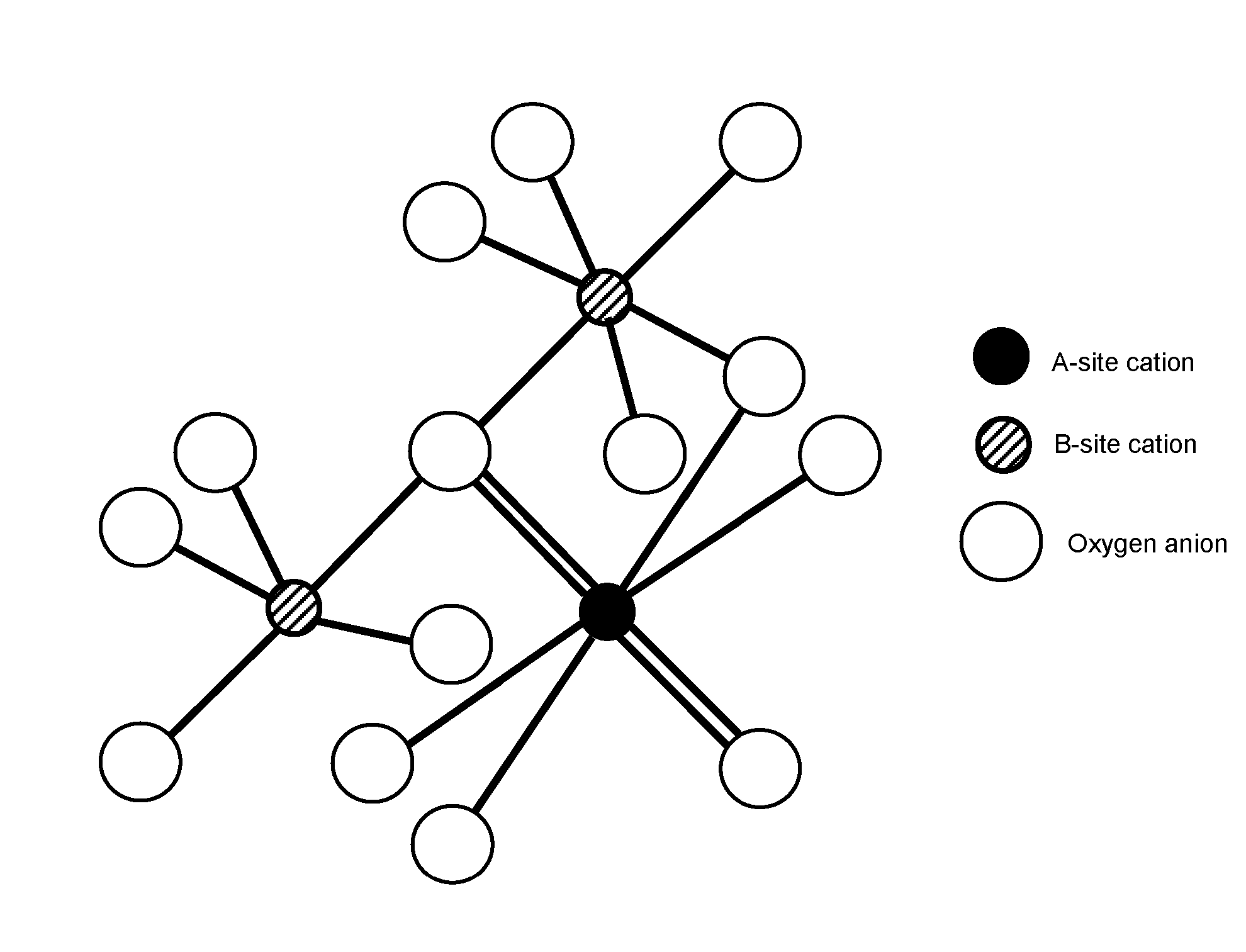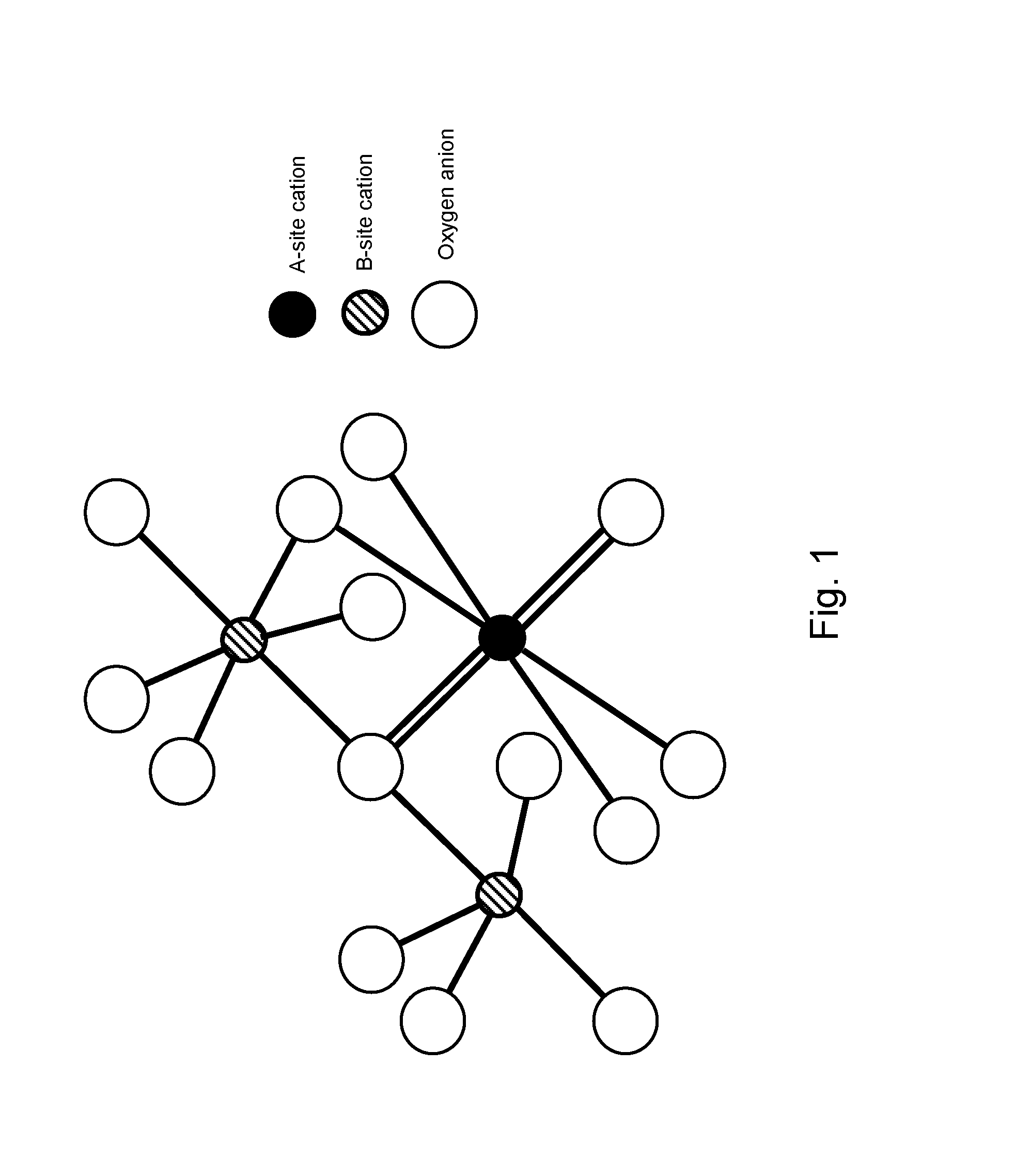Pyrochlore-type catalysts for the reforming of hydrocarbon fuels
- Summary
- Abstract
- Description
- Claims
- Application Information
AI Technical Summary
Benefits of technology
Problems solved by technology
Method used
Image
Examples
examples
Catalyst Preparation
[0054]Catalysts may be prepared using the Pechini Method. See U.S. Pat. No. 3,330,697, issued to Pechini, issued on Jul. 11, 1967. Sources of the metal cations A, A′, A″, B, B′, or B″ include compounds of those cations and mixtures thereof. An exemplary preparation method follows:
[0055]Metal nitrate precursors and citric acid are dissolved separately into deionized water. The citric acid / metal molar ratio may be from 1.0-1.5, preferably about 1.2. Aqueous metal salts are then combined into a beaker and stirred. To this mixture, aqueous citric acid is added. The solution is then heated to 65° C. under stirring. At 65° C., ethylene glycol is added. The ethylene glycol / citric acid ratio may be from 1.0-4.0, preferably about 1.0. The solution is then stirred continuously at temperature until most of the water has evaporated and a viscous, transparent resin remains. The beaker is then transferred into a heating mantle pre-heated to 65° C. The temperature of the mantle...
PUM
| Property | Measurement | Unit |
|---|---|---|
| Temperature | aaaaa | aaaaa |
| Time | aaaaa | aaaaa |
| Percent by mass | aaaaa | aaaaa |
Abstract
Description
Claims
Application Information
 Login to View More
Login to View More - R&D
- Intellectual Property
- Life Sciences
- Materials
- Tech Scout
- Unparalleled Data Quality
- Higher Quality Content
- 60% Fewer Hallucinations
Browse by: Latest US Patents, China's latest patents, Technical Efficacy Thesaurus, Application Domain, Technology Topic, Popular Technical Reports.
© 2025 PatSnap. All rights reserved.Legal|Privacy policy|Modern Slavery Act Transparency Statement|Sitemap|About US| Contact US: help@patsnap.com



